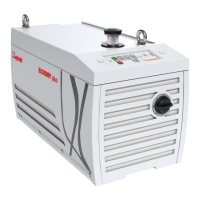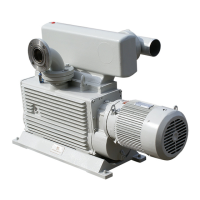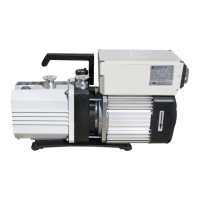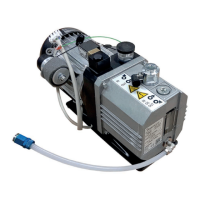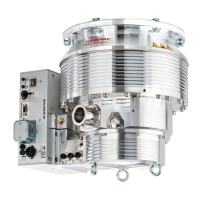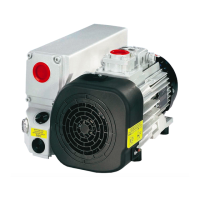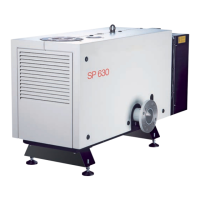Safety Information
4 300758785_002_C1 - 06/2019 - © Leybold
0 Important Safety Information
0.1 Mechanical Hazards
1 Avoid exposing any part of the human body to the vacuum.
2 Select a secure place for the appliance (level surface).
3 The discharge port of the pump must not be blocked or constricted.
Never operate the pump with a seal-off stopper in place blanking off
the exhaust port. Operate the pump only with a connected vacuum
system to the intake flange.
4 With a closed exhaust pipe, the pump can generate up to 5 bar pres-
sure (absolute) on the exhaust. The exhaust pipes should be laid out
according.
5 Condensates from the pump can collect inside or at the exhaust,
escape and spill onto the floor, when operating the pump without an
exhaust line or during transport with an exhaust being not blanked off.
In this case there exists the risk of slipping.
6 Due to its weight the pump must only be lifted by duly trained and
qualified persons.
0.2 Electrical hazards
1 Housing parts must not be opened.
2 Connect the appliance only to a properly and professionally installed
mains outlet socket with protective earth connection.
3 Note the information on the IP type of protection.
0.3 Thermal Hazards
1 At the crane eye, the intake flange and the exhaust flange, the pump
may attain temperatures over 80 °C. There is the risk of suffering
burns. Note the danger symbols on the pump itself.
0.4 Hazards Caused by Materials and Substances
1 Fluoropolymers are used as sealants (FKM) and as lubricants (PFPE) in
the pumps. In case the pump suffers a severe mechanical failure, it
cannot be ruled out that toxic and/or corrosive substances may be
released due to thermal decomposition. Do not open the pump mod-
ule, and close off the inlet and exhaust flanges using blank flanges.
2 Before commissioning the pump, make sure that the media which are
to be pumped are compatible with each other so as to avoid hazard-
ous situations. Observe the instructions for proper and improper use of
the pump in Section 3.2.
3 When pumping hazardous gases we recommend a leak search on a
regular basis. Leaks in the pump cannot be ruled out under all circum-
stances. When pumping hazardous gases, the operator must ensure
that that leaks at the pump will not be a hazard. When pumping toxic
gases replace the gas ballast switch with a plug screw or connect a
gas supply to the gas ballast.
WARNING
DANGER
CAUTION
DANGER
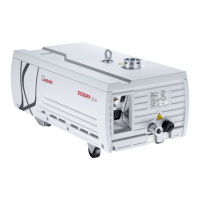
